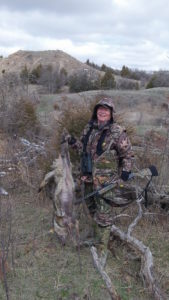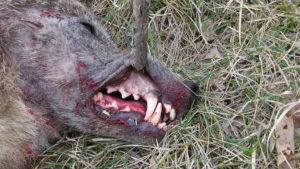“Fawn killing season” is just around the corner and hunters need to do their part to give our favorite hunting species a chance to grow up. Coyotes mostly kill to live and if these consumptive beasts are howling in your area, you can bet every fawn is in peril. Coyotes are smart predators and despite hunters regularly in their territories, few are killed unless sportsmen actually hunt them by calling, tracking, or locating dens.
Here to Stay
Many biologist believe that you cannot eliminate a coyote population because a portion of the predators naturally roam and look for new territory. Like catching a big bass under a favored sunken tree, once gone another will replace it due to the abundance of food and cover. However, just because we can’t kill every coyote doesn’t mean you can’t reduce the number in your deer area. Eliminating one big female puts a dent in fawn predation and erases a batch of coyotes the following year.
Millions of American will be afield during the spring gobbler season and should be alert for coyotes. A few may approach a hen call or even attack decoys and no hunter should pass up a chance. Two years ago, I was hunting in South Dakota when a song dog came bouncing along just below the horizon. I ducked down, advanced a few steps and laced the beast with turkey loads. Despite two shots at 25 yards, the 40-pounder still ran 50 yards before going down.
As you roam your favorite turkey spots be aware of coyote presence, especially dens which will be littered with rabbit fur, feathers, and other animal pieces. Don’t spend much time at the den or human scent will cause the predators to relocate. Find a good hiding place and return with a rifle or heavy loads and watch the location until dark. One or more will probably show up.
The folks at Grandview Outdoors have gathered 10 ways to kill more coyotes. Use one or all, but do your best to keep their numbers down:
10. LOCATE COYOTES BY LISTENING
Coyotes are among the most vocal predators. They use howls to proclaim territorial boundaries, to let other coyotes know where they are and, in summer, sometimes just to make noise for the fun of it.
Howls pinpoint areas where coyotes are bedding or loafing, so pinpoint the origin of the howls. If you can’t get the coyotes to howl, which can be difficult in some East Coast locations, use firsthand scouting to find hard evidence of coyote activity.



















![The Best Deer Camp Chili [VIDEO] Deer Chili Ingredients, Tomatoes, Chili Spices](/wp-content/uploads/2015/10/Deer-Chili-Deer-Camp-Recipe-218x150.jpg)
![How to Call Elk Early in the Season [VIDEO]](/wp-content/uploads/2016/08/byers003-218x150.jpg)






![Idiots Disturb Hunter: How Would You Have Handled It? [VIDEO]](/wp-content/uploads/2015/10/DSC00110-e1474487693878-100x70.jpg)
![Albino Buck Shocked to Shed His Antlers [VIDEO]](/wp-content/uploads/2015/10/AlbinoDeer-100x70.jpg)